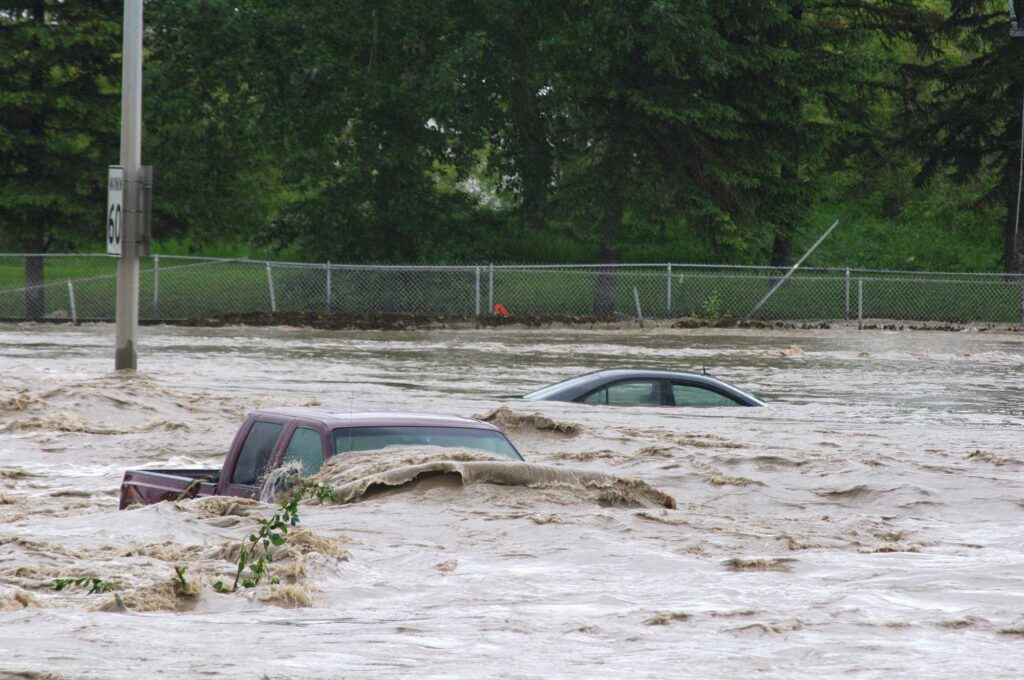Evidence from global observations and climate modelling consistently points to widespread intensification of short-duration precipitation in warmer climates (Westra et al., 2013; Zhang et al., 2013). This general finding is mirrored over many North American regions, which are already experiencing more intense and frequent precipitation extremes (Kirchmeier-Young, 2020). However, local-scale changes in extreme precipitation are more difficult to assess (Bush and Lemmen, 2019), and confidence in extreme precipitation projections is generally lower than for temperature. This is because extreme precipitation itself is a complex process that climate scientists have an incomplete understanding of, and climate models do not tend to represent well. For example, typical regional and global climate models have resolutions ranging from 10 to 250 km, whereas extreme precipitation events can occur on scales of 1 kilometer or less. And climate models do not include all of the physical processes that produce local intense rainstorms. For these reasons, short-duration extreme precipitation values provided by current global or regional climate models should not be interpreted literally as the exact rainfall amounts that will be experienced in the future at specific locations.
However, there is strong evidence to suggest that at a basic level, the intensity of extreme precipitation – for a range of extreme precipitation metrics – is linked very closely to temperature: as temperature increases, so does precipitation intensity, by a general factor of around 7% for every 1˚C increase in temperature. As a result, global warming is likely to cause increases in extreme daily and sub-daily rainfall, at around this general rate. Expressing relative changes in rainfall extremes as a function of warming is often referred to as “temperature scaling”. It is also sometimes called “Clausius-Clapeyron scaling”. This relationship is remarkably powerful despite its simplicity, because it allows future estimates of precipitation to be made based on temperature projections, which are much more well-simulated by global climate models.


The general relationship between warming and extreme precipitation is robust. However, the specific magnitude of this linkage is less certain. For example, for some locations and seasons, a 1˚C increase in temperature can result in a 6% increase in extreme precipitation intensity, whereas in another location and season, this relationship may change to an 8% increase or more. Perhaps more importantly, different metrics of extreme precipitation (for example, different annual maximum rainfall return periods, or different storm event durations) may ‘scale’ at different rates, in relation to their underlying linkages to changing atmospheric temperature conditions and key precipitation mechanisms (Pacific Climate Impacts Consortium, 2015). In short, while the ‘direction’ of the relationship between temperature and extreme precipitation is certain (warmer temperatures will generally lead to more intense and frequent extreme precipitation events), confidence around the exact ‘magnitude’ of this relationship is lower, and could vary significantly around the central consensus value of 7%. Nonetheless, temperature scaling remains a physically justifiable way to develop future extreme precipitation estimates that isn’t hindered by challenges related to direct precipitation projections.








